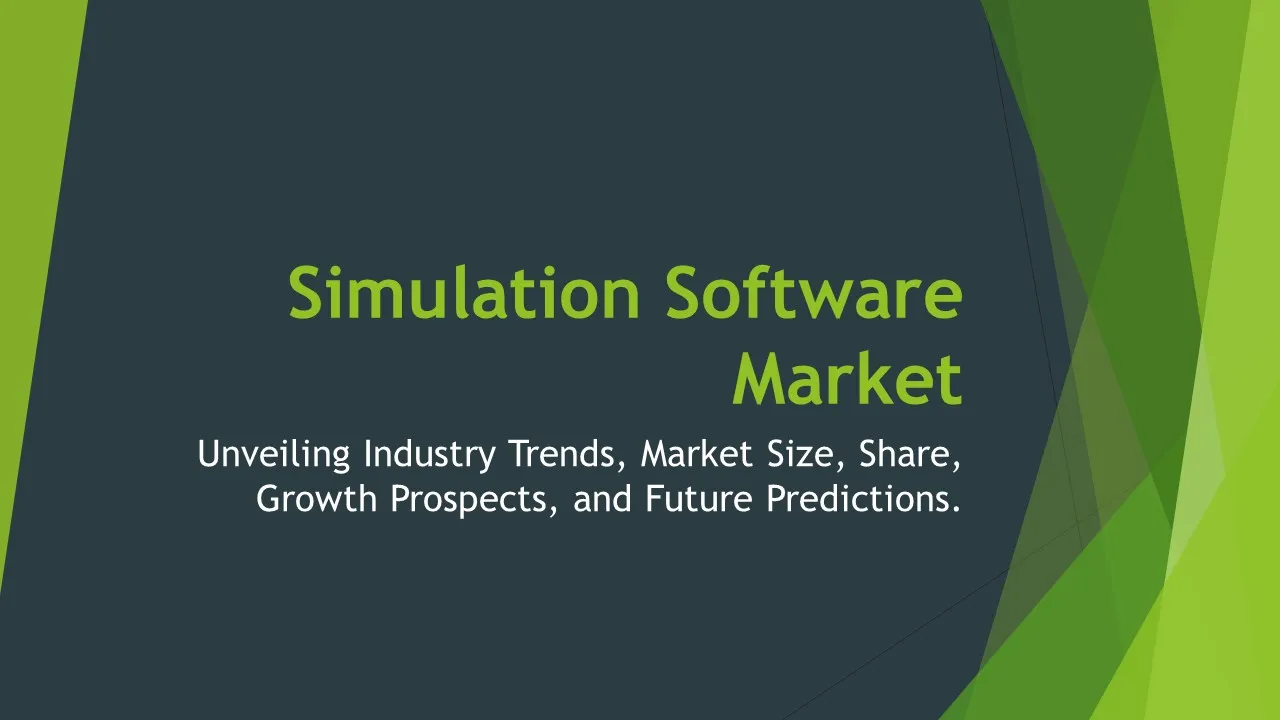DNA Sequencing
DNA Sequencing Market Segments - by Product Type (Instruments, Reagents, Services), Technology (Sanger Sequencing, Next-Generation Sequencing, Third-Generation Sequencing), Application (Diagnostics, Drug Discovery, Personalized Medicine, Agriculture, and Others), End User (Academic & Research Institutes, Biopharmaceutical Companies, Hospitals & Clinics, and Others), and Region (North America, Europe, Asia Pacific, Latin America, Middle East & Africa) - Global Industry Analysis, Growth, Share, Size, Trends, and Forecast
- Report Preview
- Table Of Content
- Segments
- Methodology
DNA Sequencing Market Outlook
The global DNA sequencing market is projected to reach approximately USD 25 billion by 2033, growing at a compound annual growth rate (CAGR) of about 16% from 2025 to 2033. This growth is primarily driven by advancements in sequencing technologies, a significant reduction in sequencing costs, and an increasing prevalence of genetic disorders requiring precise diagnosis and treatment. Moreover, the rise in applications of DNA sequencing in personalized medicine, drug discovery, and agricultural biotechnology is expected to further propel market expansion. The integration of bioinformatics in genomic studies and the growing emphasis on genomic research are additional factors contributing to the rapid growth of the DNA sequencing market. As stakeholders across various sectors realize the potential of genomic data, the demand for DNA sequencing technologies will continue to surge.
Growth Factor of the Market
The DNA sequencing market is experiencing robust growth due to several critical driving factors. Firstly, the continuous evolution of sequencing technologies has significantly improved the accuracy and throughput of sequencing processes, leading to wider adoption in clinical and research applications. Secondly, the declining costs associated with DNA sequencing are making it more accessible to a broader range of users, including smaller laboratories and academic institutions. Furthermore, the increasing prevalence of chronic diseases and genetic disorders is fueling demand for genetic testing and personalized treatment options. The expansion of government and private funding for genomic research is also instrumental in supporting innovations in DNA sequencing technologies. Lastly, the rising public and private initiatives focusing on genomic data sharing and open-access platforms are enhancing collaboration, leading to accelerated advancements in the DNA sequencing field.
Key Highlights of the Market
- Significant advancements in next-generation sequencing technologies are reshaping the market landscape.
- Declining costs of sequencing and increased throughput are making DNA sequencing more accessible.
- Personalized medicine applications are driving demand for genomic data across various healthcare segments.
- Increased research funding is leading to breakthroughs in genomics and DNA sequencing methodologies.
- Growing emphasis on genetic testing for disease prevention and management is expanding market opportunities.
By Product Type
Instruments:
The instruments segment of the DNA sequencing market encompasses a variety of machines and devices utilized for sequencing DNA. These instruments have evolved significantly, from traditional sequencing platforms to advanced next-generation sequencing (NGS) systems that allow high-throughput sequencing. Notably, advancements in automation and miniaturization technologies have led to the development of portable sequencing devices that enable on-site analysis, such as in field studies or remote locations. The demand for these instruments is driven by their application in research, clinical diagnostics, and personalized medicine. As the complexity of genetic analysis increases, the requirement for sophisticated sequencing instruments is expected to grow, propelling market expansion in this segment.
Reagents:
Reagents are essential components in DNA sequencing, facilitating the reactions necessary for accurately determining the sequence of nucleotides. This segment includes a wide array of solutions such as enzymes, buffers, and nucleotides that are critical for the sequencing process. As the DNA sequencing market expands, the demand for high-quality reagents is also on the rise. Innovations in reagent formulations, including those that enable faster and more efficient sequencing processes, are contributing to market growth. Additionally, the increasing need for accurate sequencing in clinical diagnostics has further amplified the demand for specialized reagents tailored for various sequencing technologies, enhancing the overall efficiency of the sequencing workflow.
Services:
The services segment within the DNA sequencing market includes a range of offerings provided by service providers such as sequencing, data analysis, and bioinformatics support. These services are crucial for researchers and organizations that may not have the necessary infrastructure or expertise to conduct sequencing on their own. As DNA sequencing becomes increasingly complex, the demand for specialized services is growing, especially in fields such as personalized medicine and genomics research. This segment also encompasses consulting services related to genomic data interpretation, which is becoming paramount as the volume of sequencing data continues to increase. Therefore, the services segment is expected to witness significant growth as more organizations seek external expertise for their sequencing needs.
By Technology
Sanger Sequencing:
Sanger sequencing, the original method of DNA sequencing, is renowned for its accuracy and reliability. This technology employs selective incorporation of chain-terminating dideoxynucleotides, allowing the determination of nucleotide sequences up to several hundred bases long. While it has been largely overshadowed by more advanced next-generation sequencing (NGS) technologies in terms of throughput and cost, Sanger sequencing remains a crucial tool for specific applications, including validation of NGS results and sequencing smaller DNA fragments. Its strong presence in academic and clinical laboratories ensures its continued relevance, particularly in studies requiring high precision and established protocols. The market share of Sanger sequencing is expected to remain stable, especially as its application persists in diagnostics and research settings.
Next-Generation Sequencing:
Next-generation sequencing (NGS) has revolutionized the DNA sequencing landscape by offering high throughput, scalability, and cost-efficiency. NGS technologies enable the simultaneous sequencing of millions of DNA fragments, drastically reducing the time and cost associated with sequencing large genomes. This has opened up numerous applications in genomics, including whole genome sequencing, targeted sequencing, and RNA sequencing. The ability to generate massive amounts of data has led to significant advancements in personalized medicine, drug discovery, and genetic research. With continuous improvements in NGS platforms, including the development of faster and more accurate sequencing methods, the market for NGS is anticipated to grow substantially over the forecast period, becoming the dominant technology in the DNA sequencing market.
Third-Generation Sequencing:
Third-generation sequencing (TGS) represents the latest advancement in DNA sequencing technologies, enabling real-time sequencing of single DNA molecules. This technology, which includes platforms such as nanopore sequencing and single-molecule real-time (SMRT) sequencing, offers the potential for longer read lengths and faster sequencing times compared to its predecessors. TGS is particularly advantageous for complex genomic regions and structural variant detection, making it highly valuable in research and clinical diagnostics. As the demand for comprehensive genomic analysis increases, TGS is expected to gain traction, although it currently holds a smaller market share compared to NGS. The ongoing development of TGS technologies aims to enhance accuracy and reduce costs, thereby expanding their application in various areas, including personalized medicine and agricultural genomics.
By Application
Diagnostics:
The diagnostics application segment of the DNA sequencing market is gaining momentum due to the increasing need for accurate and rapid genetic testing. Sequencing technologies are being harnessed to diagnose genetic disorders, infectious diseases, and various types of cancers. Enhanced precision in diagnostics, made possible through sophisticated sequencing methods, allows for better patient management and treatment planning. The growing emphasis on personalized medicine further drives demand for genomic testing, enabling tailored therapeutic approaches based on an individual’s genetic makeup. As healthcare providers increasingly recognize the value of genetic information in clinical decision-making, the diagnostics segment is expected to experience significant growth in the coming years, representing a vital area within the broader DNA sequencing market.
Drug Discovery:
In drug discovery, DNA sequencing plays a critical role in identifying genetic targets and understanding the genetic basis of diseases. By analyzing the genomes of organisms, scientists can discover novel drug targets, leading to the development of more effective therapeutics. Sequencing technologies facilitate high-throughput screening of compounds, enabling researchers to rapidly assess their interactions with gene targets. Moreover, the integration of sequencing data with bioinformatics tools enhances the understanding of complex biological systems, thereby accelerating the drug development process. With the pharmaceutical industry increasingly leveraging genomic data to inform drug design and development, the demand for DNA sequencing in drug discovery is projected to expand significantly, making it a critical application segment.
Personalized Medicine:
Personalized medicine is transforming the landscape of healthcare by tailoring treatments based on individual genetic profiles, and DNA sequencing is at the forefront of this revolution. Through comprehensive genomic analyses, healthcare practitioners can determine how patients will respond to specific therapies, enabling them to make informed decisions about treatment options. The application of sequencing technologies in identifying genetic mutations associated with diseases allows for the development of targeted therapies, thereby improving patient outcomes. As the demand for personalized treatment continues to grow, driven by advancements in genomics and increasing patient awareness, the personalized medicine segment is expected to play a significant role in the overall growth of the DNA sequencing market.
Agriculture:
In the agricultural sector, DNA sequencing is proving to be a valuable tool for enhancing crop yields and improving food security. Through genomic sequencing, researchers can identify traits associated with disease resistance, drought tolerance, and nutritional quality, facilitating the development of genetically modified organisms (GMOs) and improved crop varieties. The application of sequencing technologies in plant genomics is accelerating the pace of breeding programs, enabling the selection of desirable traits with greater precision. Additionally, as the global population continues to rise, the need for sustainable agricultural practices becomes increasingly pressing, driving the demand for genomic solutions. Consequently, the agriculture application segment is expected to see significant growth as stakeholders recognize the benefits of incorporating DNA sequencing into agricultural research and development.
By End User
Academic & Research Institutes:
Academic and research institutes represent a substantial end-user segment for the DNA sequencing market, as they are at the forefront of genomic research and innovation. These institutions utilize sequencing technologies for a wide range of applications, including fundamental research, developing new methodologies, and exploring the genetic basis of diseases. The increasing focus on genomics within academic curricula and the growing number of collaborative research projects are driving the demand for sequencing technologies in this sector. Moreover, funding from government agencies and private organizations for research initiatives in genomics further boosts the adoption of DNA sequencing platforms in academic settings. As research efforts expand, the academic and research institutes segment is poised for significant growth in the DNA sequencing market.
Biopharmaceutical Companies:
Biopharmaceutical companies are major end-users of DNA sequencing technologies, leveraging these tools to develop innovative therapies and improve drug efficacy. These companies utilize sequencing for various purposes, including target identification, biomarker discovery, and the development of personalized therapies. The integration of genomic data into the drug discovery process enables biopharmaceutical companies to design more effective and safer drugs tailored to specific patient populations. As the demand for precision medicine continues to rise, biopharmaceutical companies are increasingly investing in sequencing technologies to enhance their research and development capabilities. Consequently, this segment is expected to witness robust growth as the biopharmaceutical industry embraces the opportunities presented by genomic advancements.
Hospitals & Clinics:
Hospitals and clinics are increasingly adopting DNA sequencing technologies to enhance diagnostics and improve patient care. The ability to conduct genetic testing for various conditions, including hereditary diseases and cancers, is leading to more accurate diagnoses and informed treatment decisions. The integration of sequencing into clinical workflows allows healthcare providers to offer personalized treatment options based on patients' genetic profiles. Additionally, the growing focus on preventive medicine and the early detection of diseases further drive the demand for sequencing services in hospitals and clinics. As healthcare systems worldwide recognize the value of genomic information in improving patient outcomes, the hospitals and clinics segment is anticipated to experience significant growth in the DNA sequencing market.
By Region
North America currently dominates the global DNA sequencing market, accounting for a substantial share due to the presence of leading technology developers, extensive research funding, and a strong healthcare infrastructure. The region's well-established biopharmaceutical and healthcare sectors contribute significantly to the demand for DNA sequencing technologies across various applications, including clinical diagnostics and drug discovery. Furthermore, the increasing emphasis on personalized medicine and genomic research initiatives has further fueled market growth in North America. The region is anticipated to maintain its leadership position during the forecast period, with a CAGR of approximately 15% from 2025 to 2033, as advancements in sequencing technologies continue to proliferate.
Europe holds the second-largest market share for DNA sequencing, driven by significant investments in genomic research and a growing emphasis on precision medicine. The region's regulatory environment is also favorable for the adoption of genomic technologies, facilitating the integration of DNA sequencing into clinical practices. Additionally, European countries are increasingly focusing on collaborative research initiatives aimed at advancing genomic sciences, leading to increased demand for sequencing technologies in both academic and clinical settings. With the growing awareness of the importance of genomics in healthcare, Europe is poised to experience steady market growth, further solidifying its position in the global DNA sequencing landscape.
Opportunities
The DNA sequencing market is poised to capitalize on numerous opportunities, particularly as the field of genomics continues to expand. One prominent opportunity lies in the growing application of sequencing technologies in personalized medicine. As healthcare shifts toward more individualized approaches to treatment, the demand for genomic data will increase, prompting healthcare providers to seek advanced sequencing solutions. Additionally, collaborations between academic institutions, research organizations, and biotechnology companies are on the rise, fostering innovation and driving the development of novel sequencing methodologies. These partnerships can lead to breakthroughs in understanding complex diseases, further broadening the market potential for DNA sequencing technologies. Furthermore, emerging markets in Asia Pacific and Latin America present significant growth prospects, as investments in healthcare infrastructure and genomic research increase. Companies that can effectively navigate these emerging markets are likely to find lucrative opportunities for expansion.
Another opportunity exists in the continuous advancements in sequencing technologies, such as third-generation sequencing and portable sequencing devices. These innovations are expected to enhance the accessibility and speed of sequencing processes, making them more appealing to various end users, including hospitals and clinics. As costs continue to decrease and the efficiency of sequencing improves, more organizations will likely adopt these technologies, increasing overall market demand. Additionally, the integration of artificial intelligence and machine learning in genomics is poised to revolutionize data analysis and interpretation, enabling researchers and clinicians to derive actionable insights from vast amounts of genomic data. This integration could unlock new applications and drive further growth in the DNA sequencing market, positioning it for a promising future.
Threats
Despite the promising outlook for the DNA sequencing market, several threats could impact its growth trajectory. One significant threat is the regulatory landscape surrounding genetic testing and sequencing technologies. Stricter regulations may pose challenges for companies seeking to bring new products to market, potentially delaying innovation and market entry. Additionally, concerns regarding data privacy and the ethical implications of genetic testing may deter individuals from pursuing sequencing services, impacting market demand. As genomic data becomes increasingly valuable, the potential for data breaches and misuse could further exacerbate these concerns, leading to reduced public trust in DNA sequencing technologies. Moreover, the rapid pace of technological advancements might result in market saturation, as numerous companies vie for market share, potentially leading to price wars that could undermine profitability.
Another restraining factor for the DNA sequencing market is the high initial investment required for advanced sequencing technologies and infrastructure. Smaller laboratories and organizations may find it challenging to allocate sufficient resources for acquiring the latest sequencing instruments and reagents, limiting their participation in the market. Additionally, the complexity of sequencing technologies may require specialized training and expertise, creating barriers to entry for new entrants and smaller players. As a result, the market may become dominated by a few large companies with substantial resources, limiting competition and innovation. Addressing these challenges will be crucial for ensuring sustained growth and accessibility within the DNA sequencing market.
Competitor Outlook
- Illumina, Inc.
- Thermo Fisher Scientific Inc.
- Pacific Biosciences of California, Inc.
- Oxford Nanopore Technologies Ltd.
- Agilent Technologies, Inc.
- Bio-Rad Laboratories, Inc.
- Qiagen N.V.
- Genomatix Software GmbH
- 10x Genomics, Inc.
- BGI Genomics Co., Ltd.
- PerkinElmer, Inc.
- Roche Sequencing Solutions, Inc.
- Macrogen, Inc.
- Zymo Research Corporation
- New England Biolabs, Inc.
The competitive landscape of the DNA sequencing market is characterized by a mix of established companies and emerging players, all vying for a share of this rapidly growing sector. Major players such as Illumina, Inc. and Thermo Fisher Scientific Inc. dominate the market, leveraging their extensive product portfolios and established market presence to maintain competitive advantages. These companies continually invest in research and development to innovate and enhance their sequencing platforms, ensuring they meet the evolving needs of their customers. The presence of various sequencing technologies, including Sanger sequencing, next-generation sequencing, and third-generation sequencing, allows these companies to cater to a diverse range of applications and end users, further solidifying their market positions.
Emerging players such as Oxford Nanopore Technologies Ltd. and 10x Genomics, Inc. are gaining traction in the DNA sequencing market by offering unique solutions that address specific challenges in genomic analysis. For instance, Oxford Nanopore Technologies has developed portable sequencing devices that enable real-time analysis, making sequencing more accessible in remote locations. Similarly, 10x Genomics focuses on developing single-cell sequencing solutions, which are increasingly important for understanding complex biological systems. As these companies continue to innovate and expand their offerings, they are likely to disrupt the market and challenge established players, fostering a more competitive environment.
Collaboration and partnership strategies are also prevalent among market participants, as companies seek to leverage each other's strengths and accelerate innovation. Joint ventures and alliances between technology providers, academic institutions, and research organizations are fostering advancements in sequencing methodologies and applications. By pooling resources and expertise, these collaborations aim to overcome existing challenges in the field of genomics and enhance the overall efficiency of DNA sequencing processes. As the landscape continues to evolve, companies that can effectively navigate partnerships and collaborations will be well-positioned to capture growth opportunities in the dynamic DNA sequencing market.
1 Appendix
- 1.1 List of Tables
- 1.2 List of Figures
2 Introduction
- 2.1 Market Definition
- 2.2 Scope of the Report
- 2.3 Study Assumptions
- 2.4 Base Currency & Forecast Periods
3 Market Dynamics
- 3.1 Market Growth Factors
- 3.2 Economic & Global Events
- 3.3 Innovation Trends
- 3.4 Supply Chain Analysis
4 Consumer Behavior
- 4.1 Market Trends
- 4.2 Pricing Analysis
- 4.3 Buyer Insights
5 Key Player Profiles
- 5.1 Qiagen N.V.
- 5.1.1 Business Overview
- 5.1.2 Products & Services
- 5.1.3 Financials
- 5.1.4 Recent Developments
- 5.1.5 SWOT Analysis
- 5.2 Illumina, Inc.
- 5.2.1 Business Overview
- 5.2.2 Products & Services
- 5.2.3 Financials
- 5.2.4 Recent Developments
- 5.2.5 SWOT Analysis
- 5.3 Macrogen, Inc.
- 5.3.1 Business Overview
- 5.3.2 Products & Services
- 5.3.3 Financials
- 5.3.4 Recent Developments
- 5.3.5 SWOT Analysis
- 5.4 PerkinElmer, Inc.
- 5.4.1 Business Overview
- 5.4.2 Products & Services
- 5.4.3 Financials
- 5.4.4 Recent Developments
- 5.4.5 SWOT Analysis
- 5.5 10x Genomics, Inc.
- 5.5.1 Business Overview
- 5.5.2 Products & Services
- 5.5.3 Financials
- 5.5.4 Recent Developments
- 5.5.5 SWOT Analysis
- 5.6 BGI Genomics Co., Ltd.
- 5.6.1 Business Overview
- 5.6.2 Products & Services
- 5.6.3 Financials
- 5.6.4 Recent Developments
- 5.6.5 SWOT Analysis
- 5.7 Genomatix Software GmbH
- 5.7.1 Business Overview
- 5.7.2 Products & Services
- 5.7.3 Financials
- 5.7.4 Recent Developments
- 5.7.5 SWOT Analysis
- 5.8 New England Biolabs, Inc.
- 5.8.1 Business Overview
- 5.8.2 Products & Services
- 5.8.3 Financials
- 5.8.4 Recent Developments
- 5.8.5 SWOT Analysis
- 5.9 Zymo Research Corporation
- 5.9.1 Business Overview
- 5.9.2 Products & Services
- 5.9.3 Financials
- 5.9.4 Recent Developments
- 5.9.5 SWOT Analysis
- 5.10 Agilent Technologies, Inc.
- 5.10.1 Business Overview
- 5.10.2 Products & Services
- 5.10.3 Financials
- 5.10.4 Recent Developments
- 5.10.5 SWOT Analysis
- 5.11 Bio-Rad Laboratories, Inc.
- 5.11.1 Business Overview
- 5.11.2 Products & Services
- 5.11.3 Financials
- 5.11.4 Recent Developments
- 5.11.5 SWOT Analysis
- 5.12 Thermo Fisher Scientific Inc.
- 5.12.1 Business Overview
- 5.12.2 Products & Services
- 5.12.3 Financials
- 5.12.4 Recent Developments
- 5.12.5 SWOT Analysis
- 5.13 Roche Sequencing Solutions, Inc.
- 5.13.1 Business Overview
- 5.13.2 Products & Services
- 5.13.3 Financials
- 5.13.4 Recent Developments
- 5.13.5 SWOT Analysis
- 5.14 Oxford Nanopore Technologies Ltd.
- 5.14.1 Business Overview
- 5.14.2 Products & Services
- 5.14.3 Financials
- 5.14.4 Recent Developments
- 5.14.5 SWOT Analysis
- 5.15 Pacific Biosciences of California, Inc.
- 5.15.1 Business Overview
- 5.15.2 Products & Services
- 5.15.3 Financials
- 5.15.4 Recent Developments
- 5.15.5 SWOT Analysis
- 5.1 Qiagen N.V.
6 Market Segmentation
- 6.1 DNA Sequencing Market, By End User
- 6.1.1 Academic & Research Institutes
- 6.1.2 Biopharmaceutical Companies
- 6.1.3 Hospitals & Clinics
- 6.1.4 Others
- 6.2 DNA Sequencing Market, By Technology
- 6.2.1 Sanger Sequencing
- 6.2.2 Next-Generation Sequencing
- 6.2.3 Third-Generation Sequencing
- 6.3 DNA Sequencing Market, By Application
- 6.3.1 Diagnostics
- 6.3.2 Drug Discovery
- 6.3.3 Personalized Medicine
- 6.3.4 Agriculture
- 6.3.5 Others
- 6.4 DNA Sequencing Market, By Product Type
- 6.4.1 Instruments
- 6.4.2 Reagents
- 6.4.3 Services
- 6.1 DNA Sequencing Market, By End User
7 Competitive Analysis
- 7.1 Key Player Comparison
- 7.2 Market Share Analysis
- 7.3 Investment Trends
- 7.4 SWOT Analysis
8 Research Methodology
- 8.1 Analysis Design
- 8.2 Research Phases
- 8.3 Study Timeline
9 Future Market Outlook
- 9.1 Growth Forecast
- 9.2 Market Evolution
10 Geographical Overview
- 10.1 Europe - Market Analysis
- 10.1.1 By Country
- 10.1.1.1 UK
- 10.1.1.2 France
- 10.1.1.3 Germany
- 10.1.1.4 Spain
- 10.1.1.5 Italy
- 10.1.1 By Country
- 10.2 Asia Pacific - Market Analysis
- 10.2.1 By Country
- 10.2.1.1 India
- 10.2.1.2 China
- 10.2.1.3 Japan
- 10.2.1.4 South Korea
- 10.2.1 By Country
- 10.3 DNA Sequencing Market by Region
- 10.4 Latin America - Market Analysis
- 10.4.1 By Country
- 10.4.1.1 Brazil
- 10.4.1.2 Argentina
- 10.4.1.3 Mexico
- 10.4.1 By Country
- 10.5 North America - Market Analysis
- 10.5.1 By Country
- 10.5.1.1 USA
- 10.5.1.2 Canada
- 10.5.1 By Country
- 10.6 Middle East & Africa - Market Analysis
- 10.6.1 By Country
- 10.6.1.1 Middle East
- 10.6.1.2 Africa
- 10.6.1 By Country
- 10.1 Europe - Market Analysis
11 Global Economic Factors
- 11.1 Inflation Impact
- 11.2 Trade Policies
12 Technology & Innovation
- 12.1 Emerging Technologies
- 12.2 AI & Digital Trends
- 12.3 Patent Research
13 Investment & Market Growth
- 13.1 Funding Trends
- 13.2 Future Market Projections
14 Market Overview & Key Insights
- 14.1 Executive Summary
- 14.2 Key Trends
- 14.3 Market Challenges
- 14.4 Regulatory Landscape
Segments Analyzed in the Report
The global DNA Sequencing market is categorized based on
By Product Type
- Instruments
- Reagents
- Services
By Technology
- Sanger Sequencing
- Next-Generation Sequencing
- Third-Generation Sequencing
By Application
- Diagnostics
- Drug Discovery
- Personalized Medicine
- Agriculture
- Others
By End User
- Academic & Research Institutes
- Biopharmaceutical Companies
- Hospitals & Clinics
- Others
By Region
- North America
- Europe
- Asia Pacific
- Latin America
- Middle East & Africa
Key Players
- Illumina, Inc.
- Thermo Fisher Scientific Inc.
- Pacific Biosciences of California, Inc.
- Oxford Nanopore Technologies Ltd.
- Agilent Technologies, Inc.
- Bio-Rad Laboratories, Inc.
- Qiagen N.V.
- Genomatix Software GmbH
- 10x Genomics, Inc.
- BGI Genomics Co., Ltd.
- PerkinElmer, Inc.
- Roche Sequencing Solutions, Inc.
- Macrogen, Inc.
- Zymo Research Corporation
- New England Biolabs, Inc.
- Publish Date : Jan 21 ,2025
- Report ID : TE-65132
- No. Of Pages : 100
- Format : |
- Ratings : 4.5 (110 Reviews)
Related reports









